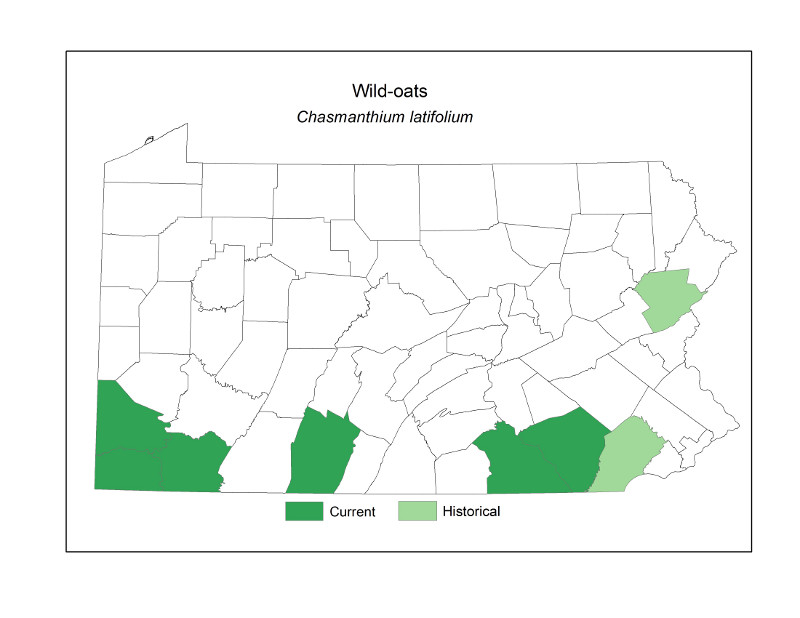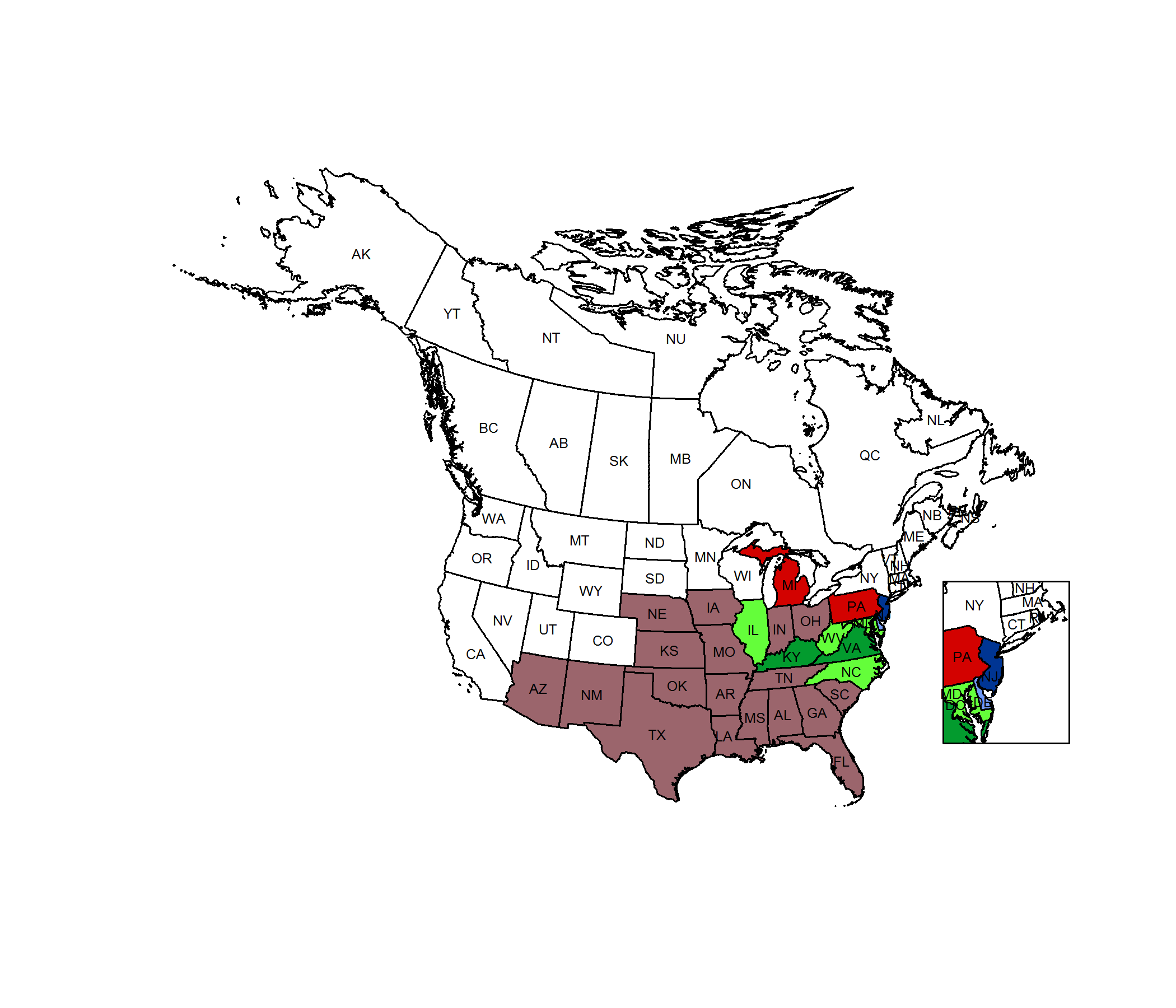 Species Factsheets
Species Factsheets
Chasmanthium latifolium
Wild-oats
State Status: TU
PBS Status: Pennsylvania Endangered (PE)
Federal Status:
Global Rank: G5
![]() rank interpretation
rank interpretation
State Rank: S1
Did You Know?
Both humans and wildlife can find use in this species - humans for dried arrangements and seeds/nesting material for birds.
Description
Wild-oats (Chasmanthim latifolium) is a colonial grass growing from stout rhizomes (underground stems). Individual stems are 1-1.5m tall.
Rank Justification
Critically imperiled in the nation or state because of extreme rarity (often 5 or fewer occurrences) or because of some factor(s) such as very steep declines making it especially vulnerable to extirpation from the state.
Habitat
Wild-oats grows on river and stream banks and in moist woodlands.
Survey Dates
Flowers July - September; flower structure from September - February
Distribution

Threats
Part of the floodplain habitat formerly occupied by wild-oats has been converted to agriculture, industry, and housing. The remaining habitat has been impacted by damming of rivers, which alters the natural flooding regime, and by invasive exotic species.Wild-oat is critically imperiled in Pennsylvania, at the northeastern edge of its natural range; the species is more secure to the south and west.
Management
Wild-oats colonies may be impacted flood regime modifications and timber harvesting. It is also threatened by competition from aggressive non-native species such as Japanese knotweed (Polygonum cuspidatum) and Japanese stiltgrass (Microstegium vimineum).
Conservation Status Map


NatureServe. 2017. NatureServe Explorer: An online encyclopedia of life [web application]. Version 7.1. NatureServe, Arlington, Virginia. Available https://explorer.natureserve.org.
https://www.wildflower.org/plants/result.php?id_plant=chla5
- NatureServe. 2018. NatureServe Explorer: An online encyclopedia of life [web application]. Version 7.1. NatureServe, Arlington, Virginia. Available at https://www.natureserve.org/explorer
- Pennsylvania Natural Heritage Program. 2018.
- Rhoads, A.F. and W.M. Klein, Jr. 1993. The Vascular Flora of Pennsylvania. American Philosophical Society, Philadelphia, Pennsylvania. Rhoads, A.F. and T.A. Block.
- 2007. The Plants of Pennsylvania: An Illustrated Manual. 2nd edition. University of Pennsylvania Press, Philadelphia, Pennsylvania.







